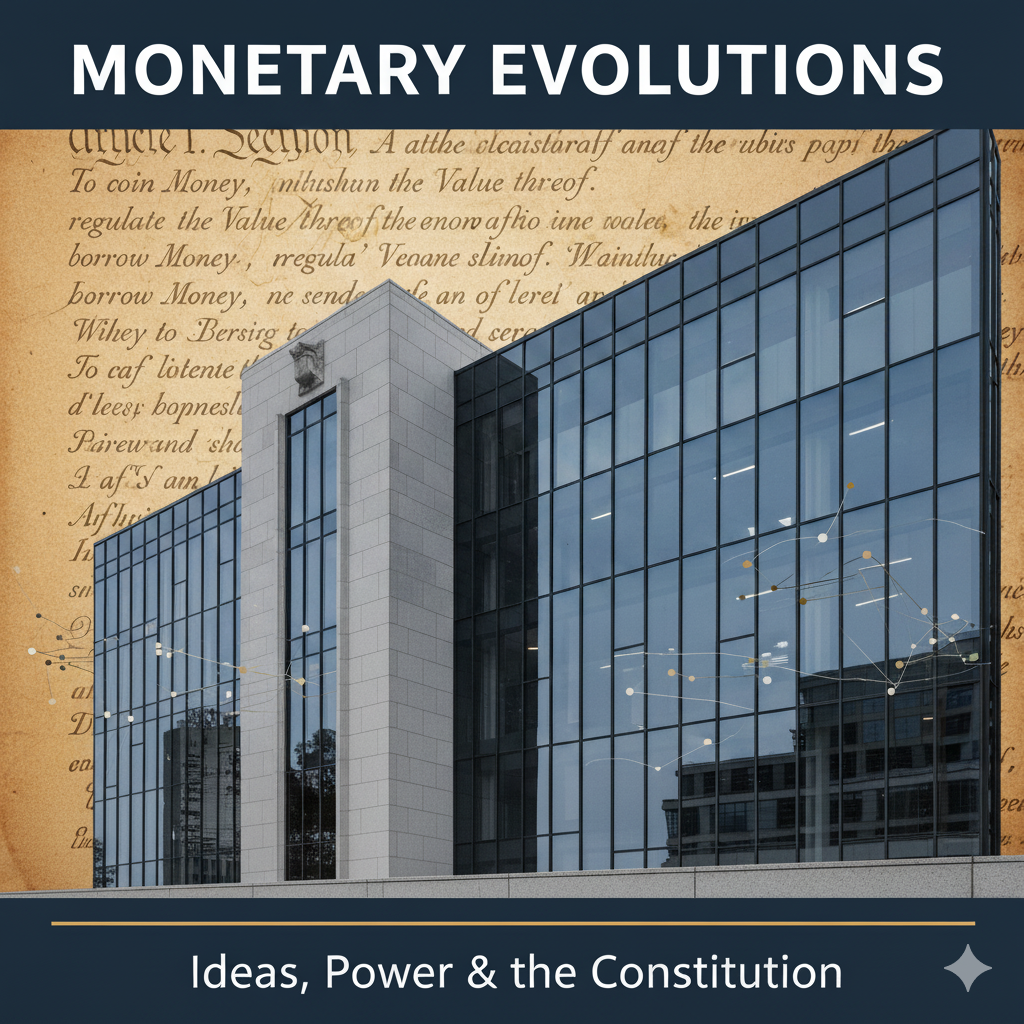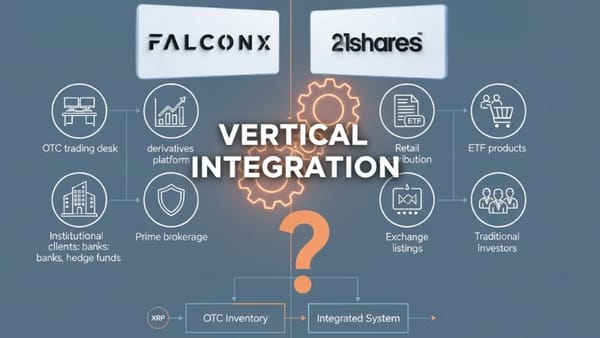Part I: Historical Foundations and Federal Reserve Elimination
The Federal Reserve System represents a 111-year experiment in central economic planning that has consistently failed. Historical evidence shows the pre-Fed era (1792-1913) achieved 3.9% annual growth vs. 2.8% post-1971, while Austrian economics proves why central banking cannot work.

The Austrian School Foundation: Why Central Banking Cannot Work
Key Insight: The Federal Reserve System has fundamentally distorted American economic development for 111 years. Its elimination, combined with precious metal standard restoration would return America to the most successful monetary framework in its history while creating unprecedented investment opportunities.
The potential elimination of the Federal Reserve represents a return to the constitutional monetary system that produced America's greatest economic growth and prosperity. To understand the implications, we must examine how markets operated during the 87 years before the Fed's creation (1792-1913) versus the 111 years of central bank manipulation (1913-2024).
Ludwig von Mises and the Impossibility of Socialist Calculation
Mises' fundamental insight: Central economic planning fails because planners cannot access the dispersed knowledge that market prices coordinate [1]. The Federal Reserve's attempts to set interest rates and manage the money supply represent classic socialist calculation problems.
Application to Central Banking:
- Interest rates coordinate time preferences across millions of individuals
- Central bank rate setting distorts these signals, creating systematic malinvestment
- Money supply expansion benefits early recipients (Cantillon effects) while harming late recipients
- Market-determined money supply reflects genuine economic demand rather than political manipulation
Historical validation: The Classical Gold Standard era (1879-1913) achieved 3.9% annual growth with near-zero inflation [2], while the Federal Reserve era (1913-2024) produced 2.8% growth with 96% currency devaluation [3].
F.A. Hayek's Business Cycle Theory and Fed Elimination
Hayek's core argument: Artificial credit expansion by central banks creates boom-bust cycles by encouraging malinvestment in longer-term production processes that cannot be sustained when credit expansion ends<sup>[4]</sup>.
Fed elimination benefits:
- Interest rates reflect genuine savings rather than central bank manipulation
- Investment decisions based on real economic signals rather than artificial credit
- Economic cycles become smaller and self-correcting rather than amplified by monetary intervention
- Wealth inequality reduction as the Cantillon effects disappear
Modern application: The 2008 housing bubble, the dot-com bubble, and the current asset bubbles all resulted from Fed credit expansion. Elimination would prevent such systematic malinvestment.
Murray Rothbard's Case Against Central Banking
Rothbard's contribution: Central banks are inherently inflationary institutions that serve banking and government interests rather than economic efficiency [5].
Key arguments:
- Fractional reserve banking with a central bank backing creates systematic fraud
- Government and banking collusion through central banking enables deficit financing and banking privileges
- Free banking systems historically provided a more stable money supply than central banks
- Competition in money leads to optimal monetary systems rather than monopoly central banking
Elimination implications:
- Banks would compete for deposits rather than relying on Fed backstop
- Government financing would require taxation or borrowing rather than monetary expansion
- Sound money emerges naturally through market competition rather than central planning
- Economic calculation improves as artificial credit distortions disappear
Pre-Federal Reserve Era: America's Monetary Golden Age (1792-1913)
The Constitutional Framework: Article I, Section 8
Constitutional mandate: Congress shall have power to "coin Money, regulate the Value thereof, and of foreign Coin, and fix the Standard of Weights and Measures." [6]
Framers' intent:
- Prevent paper money inflation that devastated Revolutionary War financing
- Establish a stable monetary standard based on precious metals
- Limit government monetary manipulation through constitutional constraints
- Enable interstate commerce through uniform monetary standards
Historical implementation: The Coinage Act of 1792 established gold and silver as constitutional money [7], with no mention of central banking or paper money creation.
Free Banking Era (1837-1863): Market-Based Monetary Systems
After the Second Bank of the United States charter expired in 1836, America experienced its most successful experiment in competitive banking.
System characteristics:
- State-chartered banks issued notes backed by gold/silver reserves
- Market discipline through note redemption demands and clearinghouse operations
- Competitive interest rates and banking services without central coordination
- Regional banks serve local economic needs rather than national political goals
Performance results:
- Economic growth averaged 4.2% annually from 1840-1860<sup>[8]</sup>
- Price level remained stable with modest deflation, improving purchasing power
- Bank failures were isolated rather than systemic due to competitive discipline
- No major financial crises until the Civil War government intervention
Key success factor: Market forces rather than central planning determined money supply, interest rates, and credit allocation.
National Banking Era (1863-1913): Partial Central Planning Failure
The National Banking Act of 1863 created the first step toward central banking by requiring federally chartered banks to hold government bonds as reserves [9].
System flaws:
- Inelastic money supply tied to government bond issuance rather than economic demand
- Regional credit allocation problems as banks concentrated in Eastern cities
- Frequent banking panics (1873, 1884, 1893, 1907) due to system rigidities
- Government debt monetization begins the bank-state symbiosis
Important lesson: Partial central banking created more problems than free banking, demonstrating why the complete Fed elimination is necessary rather than reform.
The 1907 Panic: Pretext for Central Banking
Crisis causes: Inelastic money supply under the National Banking system created liquidity shortages during seasonal demand fluctuations.
Market solutions: J.P. Morgan coordinated private rescue efforts [10], demonstrating that markets could provide monetary stability without government central banking.
Political response: The crisis was used to justify the creation of the Federal Reserve in 1913, despite market-based solutions proving effective.
Historical lesson: Crises caused by government intervention are typically used to justify more government intervention rather than addressing root causes.
Federal Reserve Era: 111 Years of Monetary Manipulation (1913-2024)
World War I: Central Banking Enables Total War
Pre-Fed constraint: The gold standard limited government war financing to taxation and borrowing, constraining military adventures.
Fed enables war: Unlimited credit creation allowed financing of unprecedented military expenditure through monetary expansion rather than democratic taxation decisions.
Economic consequences:
- Consumer prices doubled during 1917-1920 due to monetary expansion<sup>[11]</sup>
- Post-war deflation (1920-1921) as the Fed attempted to restore pre-war price levels
- Boom-bust pattern was established as the Fed policy whipsawed between expansion and contraction
Constitutional violation: Fed financing of government spending violated constitutional separation of powers and democratic control over public finance.
The 1920s: Austrian Predictions Vindicated
Fed policy: Artificial credit expansion from 1922 to 1929 while maintaining a gold standard façade through international cooperation.
Austrian warnings: Ludwig von Mises and Friedrich Hayek warned that credit expansion without increased savings must end in crisis and depression [12].
Market distortions:
- Stock market speculation funded by cheap Fed credit
- Real estate bubbles in Florida and other regions
- Malinvestment in capital goods industries that couldn't be sustained
- International instability as Fed policy affected global gold flows
1929 crash vindication: Austrian predictions proved correct as an artificial boom led to a devastating bust, validating business cycle theory.
Great Depression: Central Banking Failure
Fed policy errors: Milton Friedman and Anna Schwartz documented how Fed policy mistakes transformed recession into depression [13].
Specific failures:
- Money supply contraction (1929-1933) amplified economic decline
- The banking system collapsed as the Fed failed to provide adequate liquidity
- International transmission of crisis through central bank cooperation
- Gold standard abandonment rather than addressing policy mistakes
Free market alternative: Countries with more flexible banking systems (Canada, Scotland) avoided banking collapses entirely during the same period [14].
Post-War Bretton Woods: Dollar Privilege Through Central Banking
System design: The Fed gained the ability to export inflation through dollar reserve currency status while maintaining a gold convertibility facade.
Unsustainable privileges:
- Trade deficits are financed through dollar creation rather than economic adjustment
- Military spending globally is funded through monetary expansion
- Domestic welfare state expansion without corresponding taxation
- International dollar accumulation is creating an inevitable gold convertibility crisis
1971 collapse: Nixon Shock proved that central bank manipulation cannot override economic reality indefinitely [15].
Pure Fiat Era (1971-2024): Complete Central Bank Failure
Systematic problems under the Fed fiat system:
- Persistent inflation averaging 4% annually despite 2% targets [16]
- Asset bubble creation through credit expansion cycles
- Wealth inequality has exploded through the Cantillon effects, benefiting asset holders
- Boom-bust amplification rather than economic stabilization
- Government debt explosion enabled by the Fed's monetization capabilities
Recent crisis pattern:
- Dot-com bubble (1995-2000): Fed credit expansion and collapse
- Housing bubble (2002-2008): Fed-created credit boom and bust
- Everything bubble (2010-2024): Unprecedented Fed balance sheet expansion creating multiple asset bubbles
Fed Elimination: Theoretical Framework and Benefits
Austrian School Predictions for Fed-Free Economy
Interest rate normalization: Market-determined interest rates would reflect genuine time preferences and capital availability rather than Fed manipulation.
Expected changes:
- Higher interest rates reflecting real savings levels rather than Fed suppression
- Stable interest rate structure without Fed policy uncertainty and manipulation
- Credit allocated to productive uses rather than speculation and malinvestment
- Savings incentivized through positive real interest rates
Business cycle elimination: Without artificial credit expansion, boom-bust cycles would be largely eliminated or greatly reduced in magnitude.
Mechanism:
- Investment decisions based on genuine savings availability
- No systematic malinvestment is encouraged by artificially cheap credit
- Market corrections are swift and self-limiting rather than amplified by monetary policy
- Economic growth is more stable and sustainable over long periods
Banking System Transformation
From central bank dependence to market discipline:
- Banks compete for deposits rather than relying on Fed funding
- Reserve requirements are determined by market demand rather than Fed regulation
- Interest rates are set competitively rather than following Fed signals
- Risk management through private mechanisms rather than a government backstop
Historical precedent: Canadian banking system avoided Fed-style failures through branch banking and market discipline rather than central bank dependence [17].
Free banking advantages:
- Competition improves service and reduces costs for banking customers
- Market discipline prevents systematic risk-taking and moral hazard
- Regional credit allocation based on local economic conditions rather than Fed policy
- Innovation is encouraged through competitive pressure rather than regulatory constraint
Government Financing Revolution
End of deficit monetization: Government spending would require taxation or borrowing rather than Fed money creation.
Democratic accountability: Public spending decisions would face immediate cost recognition rather than hidden inflation taxation.
Fed's
- Spending priorities clarified through direct taxation requirements
- Government debt is limited by market demand rather than the Fed's purchases
- Political accountability is enhanced through the visible costs of government programs
- Economic resources are allocated by markets rather than political manipulation
Constitutional restoration: Fed elimination would restore constitutional separation of powers and democratic control over public finance.
Investment Implications of Fed Elimination
Financial Sector Transformation
Banking industry: Fundamental business model changes as banks transition from Fed-dependent to market-based operations.
Winners in banking:
- Community banks with strong deposit relationships and conservative lending
- Credit unions with member-focused models and low leverage
- International banks with precious metals and commodity financing expertise
- Private banking services for high-net-worth clients managing precious metals
Losers in banking:
- Money center banks are dependent on the Fed funding and government bonds
- Investment banks relying on the Fed liquidity for trading operations
- Regional banks with high leverage and Fed-dependent business models
- Mortgage companies are dependent on the Fed's mortgage-backed securities purchases
Government Bond Market Collapse
Treasury market transformation: Without Fed purchasing, government bonds would face genuine market pricing and demand constraints.
Expected changes:
- Interest rates rise to market-clearing levels without Fed suppression
- Government debt faces quantity constraints through market demand rather than Fed accommodation
- Bond market volatility increases without Fed intervention and support
- International dollar demand declines without Fed reserve currency support
Investment strategy: Avoid long-term government bonds and municipal bonds dependent on Fed policy support.
Equity Market Repricing
Stock market valuation changes: Without Fed liquidity, equity markets would reprice to reflect economic fundamentals rather than monetary expansion.
Sector implications:
- Financial engineering companies lose advantages from cheap Fed credit
- Productive companies gain relative valuation as speculation decreases
- Dividend-paying stocks become more attractive with higher interest rate competition
- Growth stocks face pressure without Fed-enabled cheap capital
P/E ratio normalization: Stock market multiples would likely compress from the current 22x average to the gold standard era 14x average.
Real Asset Premium
Precious metals: Fed elimination would dramatically increase precious metals demand as the primary alternative to Fed-manipulated fiat currency.
Real estate: Property values would adjust to reflect productive use rather than Fed-created liquidity and speculation.
Commodities: Commodity prices would reflect genuine supply and demand rather than Fed monetary policy and speculation.
Investment strategy: Increase real asset allocation significantly as Fed-created financial assets lose government support.
Historical Precedents for Central Bank Elimination
Pre-Fed American Experience (1792-1913)
Two previous central bank eliminations:
- First Bank of the United States (1791-1811): Charter expired, not renewed
- Second Bank of the United States (1816-1836): Politically defeated by Andrew Jackson [18]
Post-elimination results:
- Economic growth improved after both central bank eliminations
- Price stability is enhanced through market-based monetary systems
- Financial innovation flourished without central bank constraints
- Regional development improved through competitive banking
Key lesson: Central bank elimination has historical precedent and positive economic results in the American experience.
International Examples
Scotland (1716-1845): Free banking system with no central bank produced remarkable stability and economic growth [19].
Canada (1817-1935): Branch banking without a central bank avoided financial crises that plagued the Fed-managed American system [20].
Historical performance: Decentralized banking systems consistently outperformed central bank systems in stability and economic growth metrics.
Constitutional and Legal Framework for Fed Elimination
Constitutional Basis
Article I, Section 8: Constitutional money powers granted to Congress, not central banks.
Tenth Amendment: Powers not delegated to the federal government are reserved to the states, potentially allowing state monetary systems.
Legal precedent: Fed creation was constitutionally questionable, and its elimination would restore constitutional government.
Implementation Mechanisms
Congressional action: Federal Reserve Act repeal through the legislative process similar to the original 1913 creation.
Transition period: Gradual elimination over 3-5 years to prevent market disruption while enabling system adaptation.
State banking: State-chartered banks could resume competitive banking without federal central bank interference.
International coordination: Precious metals standards could be coordinated internationally without Fed participation.
Conclusion
The Federal Reserve System represents a 111-year experiment in central economic planning that has consistently failed to achieve its stated objectives while creating systematic economic distortions.
Austrian economic theory provides the theoretical framework demonstrating why central banking cannot work, while American historical experience before 1913 demonstrates superior economic performance without central banking.
Fed elimination combined with precious metals standard restoration would:
- Restore constitutional government and democratic accountability
- Eliminate boom-bust cycles caused by artificial credit expansion
- Improve economic growth and price stability based on historical precedent
- Reduce wealth inequality by eliminating Cantillon effects
- Enable genuine free markets rather than central bank manipulation
Investment implications: Fed elimination would fundamentally alter every aspect of American finance, creating unprecedented opportunities for investors who understand the transition to market-based monetary systems.
Next Article: Part II: Sectoral Revolution Without Central Banking - Which Industries Win Big and Which Face Extinction
Sources and References
[1] Mises, Ludwig von. Human Action: A Treatise on Economics. Yale University Press, 1949. https://mises.org/library/human-action-0
[2] Romer, Christina D. "Is the Stabilization of the Postwar Economy a Figment of the Data?" American Economic Review, 1986. https://www.nber.org/papers/w0193
[3] Federal Reserve Bank of Minneapolis. "Consumer Price Index, 1913-2024." https://www.minneapolisfed.org/about-us/monetary-policy/inflation-calculator
[4] Hayek, Friedrich A. Prices and Production. George Routledge & Sons, 1931. https://mises.org/library/prices-and-production-and-other-works
[5] Rothbard, Murray N. The Case Against the Fed. Ludwig von Mises Institute, 1994. https://mises.org/library/case-against-fed
[6] U.S. Constitution, Article I, Section 8. https://constitution.congress.gov/constitution/article-1/
[7] Coinage Act of 1792. Library of Congress. https://www.loc.gov/rr/program/bib/ourdocs/Coinage.html
[8] Johnston, Louis D. and Samuel H. Williamson. "What Was the U.S. GDP Then?" MeasuringWorth, 2024. https://www.measuringworth.com/uscompare/
[9] National Banking Act of 1863. Federal Reserve History. https://www.federalreservehistory.org/essays/national-banking-act
[10] Strouse, Jean. Morgan: American Financier. Random House, 1999.
[11] Bureau of Labor Statistics. "Consumer Price Index, 1913-1924." https://www.bls.gov/opub/uscs/1924.pdf
[12] Mises, Ludwig von. "The Austrian Theory of the Trade Cycle." The Austrian Theory of the Trade Cycle and Other Essays, 1996. https://mises.org/library/austrian-theory-trade-cycle-and-other-essays
[13] Friedman, Milton and Anna Jacobson Schwartz. A Monetary History of the United States, 1867-1960. Princeton University Press, 1963.
[14] Bordo, Michael D. "The Lender of Last Resort: Alternative Views and Historical Experience." Federal Reserve Bank of Richmond Economic Review, 1990.
[15] Nixon, Richard. "Address to the Nation Outlining a New Economic Policy." August 15, 1971. https://www.presidency.ucsb.edu/documents/address-the-nation-outlining-new-economic-policy-the-challenge-peace
[16] Federal Reserve Economic Data (FRED). "Consumer Price Index for All Urban Consumers." https://fred.stlouisfed.org/series/CPIAUCSL
[17] Bordo, Michael D. and Angela Redish. "Why did the Bank of Canada emerge in 1935?" Journal of Economic History, 1987.
[18] Hammond, Bray. Banks and Politics in America from the Revolution to the Civil War. Princeton University Press, 1957.
[19] White, Lawrence H. Free Banking in Britain: Theory, Experience and Debate, 1800-1845. Cambridge University Press, 1984.
[20] Champ, Bruce, Bruce D. Smith, and Stephen D. Williamson. "Currency Elasticity and Banking Panics: Theory and Evidence." Canadian Journal of Economics, 1996.



